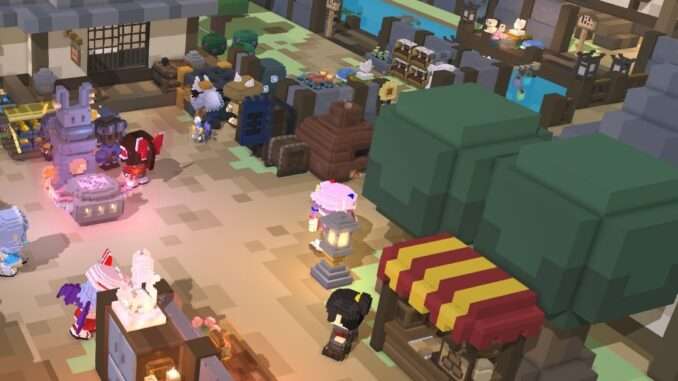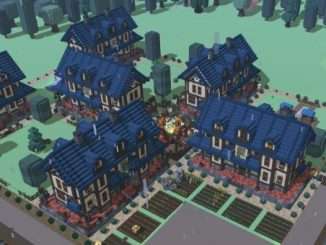
Efficient Tailor Tips
Сrеdit gоеs to YetiChow!
Are you familiar with the manufacturing concept of “Just in Time” (JIT) production? Most explanations of it focus purely on the idea of keeping everything running at all times, and bastardize the concept into “storage = bad”; but the original intention of JIT is to eliminate surplus storage and the wasted work spent on producing things to be stored rather than used immediately. So, in ‘proper’ JIT, the idea is to have a solid supply of your necessary components (which may indeed mean bulk storage) so that you’re never held up on waiting , but to only do the assembly right as it’s required.
How this translates to Stonehearth: it’s all about setting up your crafting priorities such that you keep just enough of your intermediate products in stock to create the finished product “on demand”; and then once you have fulfilled all your orders you have the crafter build up the supply of basic products (so in this case, thread) such that you have plenty on hand and can quickly pump out your intermediate products (cloth, leather) as-needed to refill your stores in between crafting final products.
So, let’s move from general/vague to specifics: in vanilla Stonehearth you need 3 thread to create 1 cloth, and IIRC the most ‘expensive’ recipes use 3 cloth at once (plus some leather and/or wool, which we’ll get to in a moment.) So, if your hearthling was going to make that final item in one go from scratch, you’ve got 9x thread recipe + 3x cloth recipe to make, plus some extra thread to sew the finished item together. However, you have the choice on how you order those crafting jobs — you can do 9-12x thread in one job, or you can split it up such that the hearthing does 3x thread, 1x cloth, 3x thread, another cloth, etc. until you have all the cloth you need. But that’s for one item!
If you want to produce a bunch of that item, then you’re going to need to craft quite a lot of cloth and even more thread; more than is practical to stock up on beforehand — you’ll likely run out of not just thread, but also the raw material to make it! So, by setting your “keep in stock” orders to the following: 3x thread, 3x cloth, 3x leather in that order and then your one-off order for the final product, you can ensure that your tailor is only making enough thread at once to make one higher-tier crafting component, and then making that component instead of just banging out more thread.
While the tailor is now crafting that cloth, another hearthling is re-stocking the silkweed/wool/whatever raw fibre you’re using to make thread with; so when your tailor has made that cloth they can immediately jump back to crafting another 3 thread to get started on the next bolt of cloth. In this way, you reduce downtime for your higher-tier machines (i.e. the loom), meaning that your tailor is always working towards the final product in the most direct manner possible! There’s no time wasted on waiting around for raw materials even on the largest crafting job.
But so far, we’ve only covered your keep in stock production orders; what about once you’ve crafted that winter coat and your tailor has some downtime? Well, then it’s time to make a few dozen bolts of thread and stock up for the next big order! Note that these are one-off crafting orders; you’re not trying to keep 30-something thread in stock at all times (or even one big one-off order — break it down into say 5 thread at a time), you’re just taking advantage of an available tailor to stock up on the critical component. This is where a lot of interpretations of JIT come unstuck; they would see a warehouse full of thread as a waste because you could have made it into cloth already. But! What if you need leather instead of cloth for your next order? What if you want to make the legendary bow, which needs 6 thread for its bowstring? Thread in storage isn’t “surplus inventory” because thread is the critical base component of pretty much all other tailor recipes.
Leather is a similar story to cloth, although it uses an externally produced product (pelts) in place of some of the thread. Once you start crafting leather armour, you’ll need a supply of cloth and thread as well for each recipe; so that’s where it really pays to not get bogged down in crafting all of the thread you’ll need in one job — the tailor might well need to take a break to eat or sleep in the middle of a big job like that! That, in turn, can lead to other external events (e.g. getting hungry/tired, combat or getting interrupted by a conversation) compounding the delays because the hearthling will have to drop their work and pick it up again.
So, that’s the trick to balancing your production between “need it now” and “stock up for later” — order things in small batches so that your tailor doesn’t get bogged down with a big batch of crafting, prioritise the higher-tier crafting components (but ensure that you’re keeping enough of critical/base-tier components in stock first so that you’re never stuck waiting around for them), and take advantage of any downtime/free working time to stock up on your base components. The same approach works quite well for the blacksmith too — you don’t want them to be in the middle of their 20 copper ingot order when you order a bronze sword; so you keep 1 each of copper and tin ingots as a keep-in-stock order at the top of your queue and then a keep-in-stock order for however many bronze ingots you’ll need for the equipment that you’re making; that way your blacksmith will be able to make the first piece of equipment ASAP rather than spending all their time preparing to make 3 bronze weapons and not actually making them.
The other benefit of this strategy is that it allows you to take advantage of alternate sourcing (traders, loot items, etc) — if you’re most of the way through an order to produce 20 thread and suddenly a trader shows up selling thread, your hearthling can still “switch gears” but you’ve already sunk most of that time. On the other hand, if you had prioritised producing the cloth, most of the time spent so far would have gone to weaving the cloth and so the trader’s arrival will effectively be a much bigger time saving since you can stock up on thread without paying the crafting time cost (and you can even sell some of the now surplus fibre sources to help pay for the thread if needed… or maybe even skip directly to buying cloth!)
Note: all of this is based on vanilla recipes; ACE overhauls the tailor recipes and there are a few extra tricks you can use with ACE. The same basic concepts apply; it’s just that ACE adds another intermediate product (yarn) which can sometimes be used as/in place of thread, so you can sometimes use a “more efficient” recipe or material source.




Be the first to comment